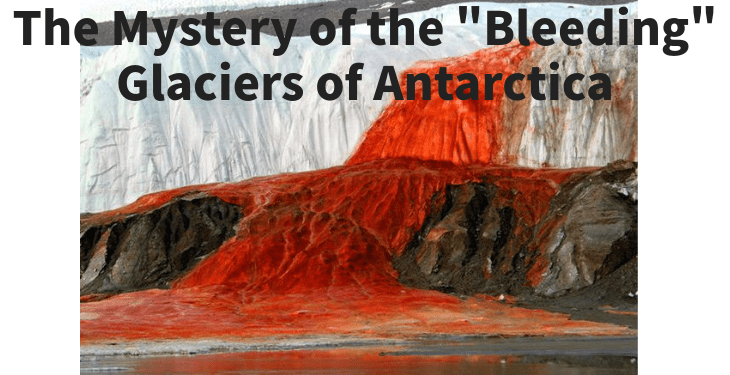The Mystery of the “Bleeding” Icebergs of Antarctica

In recent years, there have been a number of reports of “bleeding” icebergs in Antarctica. These icebergs appear to be covered in red or pink streaks, which have led some to speculate that they are bleeding.
The cause of the “bleeding” is actually quite simple. The streaks are caused by a type of algae called Chlamydomonas nivalis. This algae is found in the snow and ice of Antarctica, and it produces a red pigment called astaxanthin.
When the algae die, they release their pigment into the ice. This can give the ice a red or pink appearance. The “bleeding” is most pronounced in the spring and summer, when the algae is most active.
The “bleeding” icebergs are not a new phenomenon. They have been observed for centuries, but they have become more common in recent years. This is likely due to climate change.
As the Earth’s climate warms, the snow and ice in Antarctica are melting. This is providing the algae with more water, which is allowing them to grow and reproduce more rapidly. This, in turn, is leading to more “bleeding” icebergs.
The “bleeding” icebergs are not a cause for alarm. They are not a sign that the Earth is about to be destroyed. However, they are a reminder of the impact that climate change is having on Antarctica.

Here are some of the key takeaways from the mystery of the “bleeding” icebergs of Antarctica:
- The streaks are caused by a type of algae called Chlamydomonas nivalis.
- The “bleeding” is most pronounced in the spring and summer.
- “Bleeding” is not a new phenomenon, but it has become more common in recent years.
- The “bleeding” is likely due to climate change.
- The “bleeding” icebergs are not a cause for alarm, but they are a reminder of the impact that climate change is having on Antarctica.
Here are some of the potential consequences of the “bleeding” icebergs in Antarctica:
- The algae could release toxins into the water, which could harm marine life.
- The algae could clog up filters at power plants and other facilities, which could lead to power outages.
- The algae could disrupt shipping lanes, which could have a negative impact on the economy.
The “bleeding” icebergs of Antarctica are a complex issue with far-reaching implications. It is important to continue to study the phenomenon in order to understand its full impact and develop strategies to mitigate its effects.








